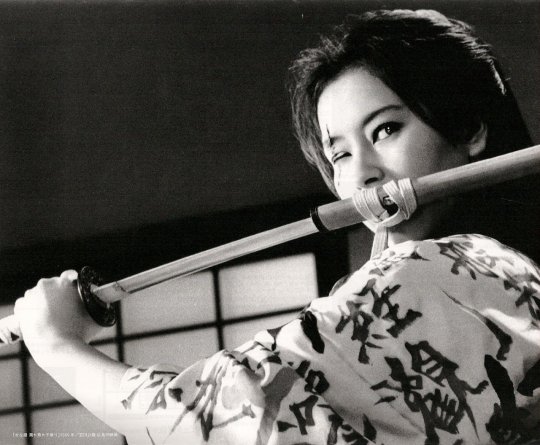#Michiyo Okusu
Text
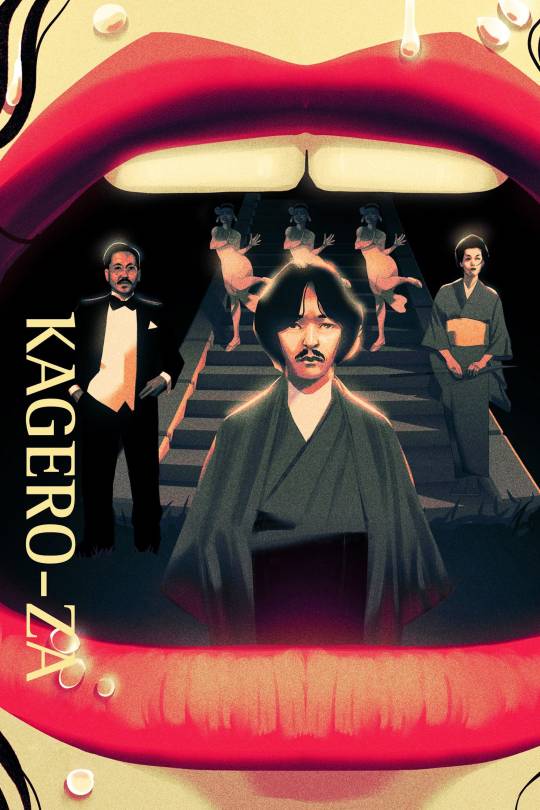
1 note
·
View note
Photo


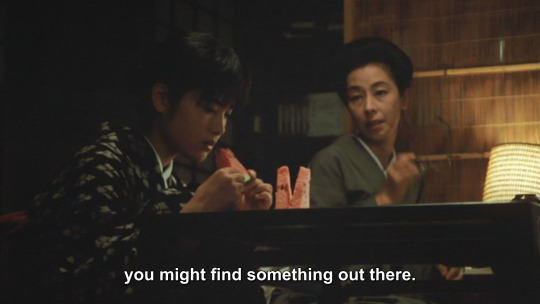
BU・SU (1987) dir. Jun Ichikawa
224 notes
·
View notes
Photo

Poster for the 1969 film Lady Sazen and the Drenched Swallow Sword from Daiei Film. Michiyo Okusu stars as a female version of Tange Sazen, the irascible one-eyed, one-armed ronin. Her character is named O-kin, but other than that she’s Tange Sazen through and through.
Genre fans might recognize the samurai in the background: that’s actor Kojiro Hong, a Daiei mainstay who starred in more than a few jidaigeki (samurai) films in his time, as well as a few Gamera films.
#Lady Sazen and the Drenched Swallow Sword#Tange Sazen#O-kin#Michiiyo Okusu#Kojiro Hongo#jidaigeki#chambara
5 notes
·
View notes
Text
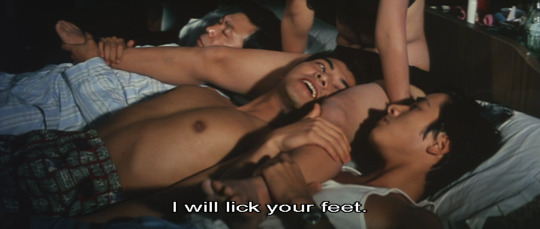
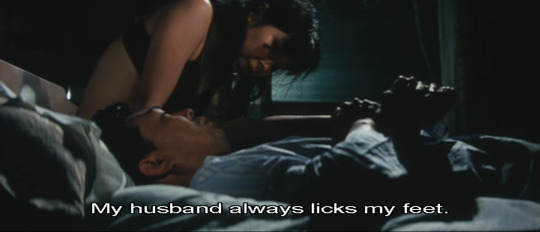
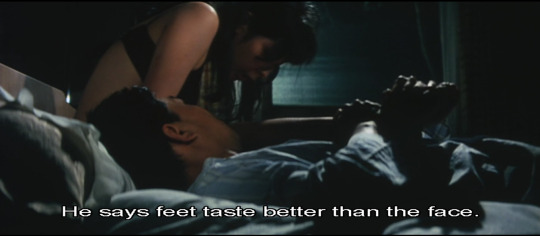
chijin no ai (love for an idiot / la gatta giapponese) / 1967 / yasuzo masumura
#yasuzomasumura#japanese film#1967 film#film frames#feet slave#junichiro tanizaki#love for an idiot#michiyo okusu
35 notes
·
View notes
Photo
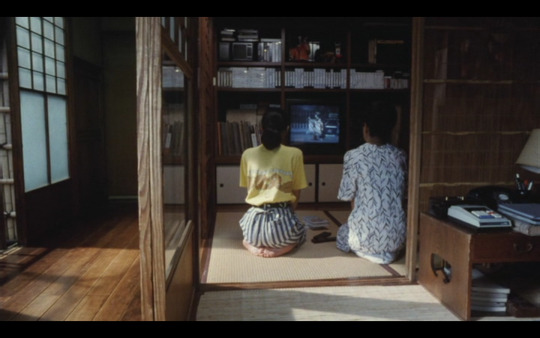
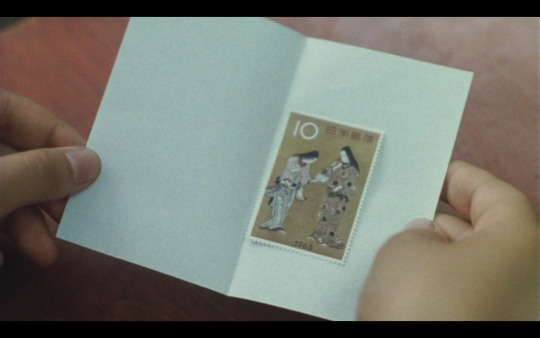

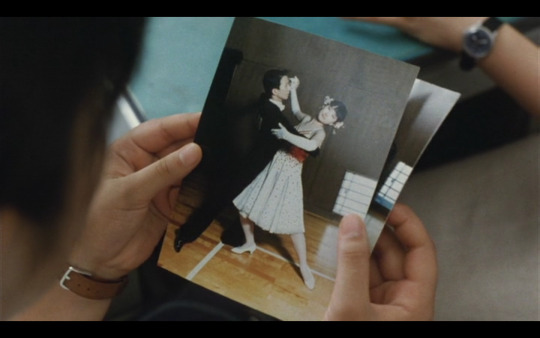

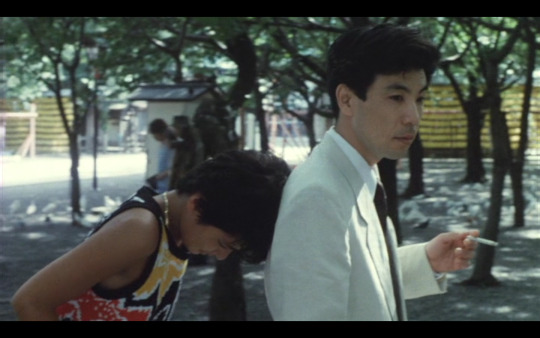
Jun Ichikawa
- Bu Su
1987
#jun ichikawa#市川準#bu su#bu・su#ブス#富田靖子#yasuko tomita#イッセー尾形#issey ogata#伊藤かずえ#kazue ito#大楠道代#michiyo okusu#japanese film#1987
146 notes
·
View notes
Photo
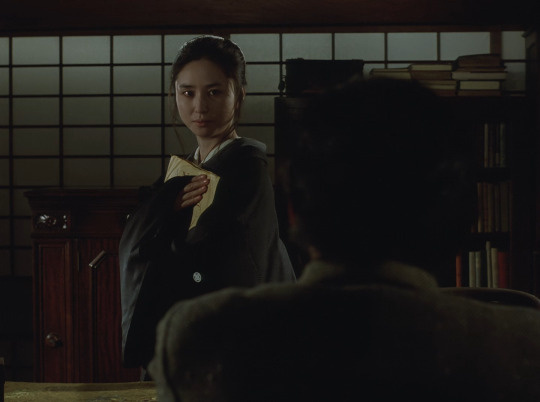



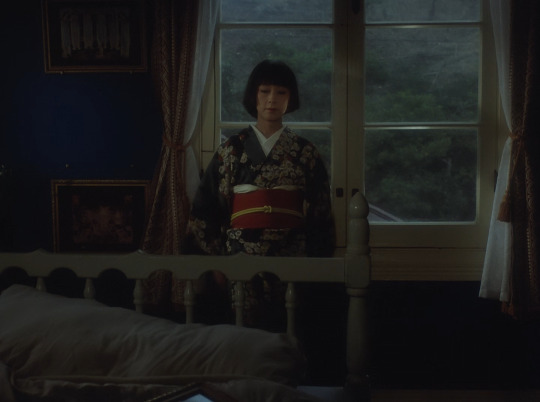
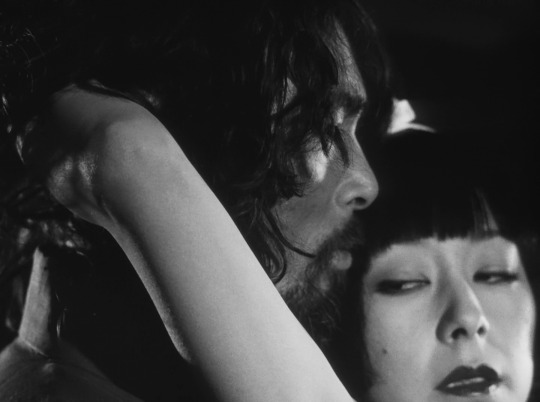
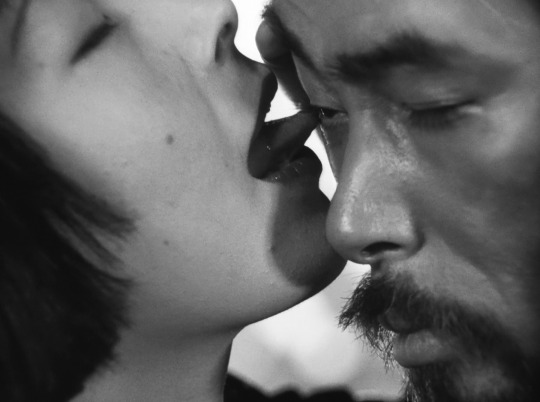
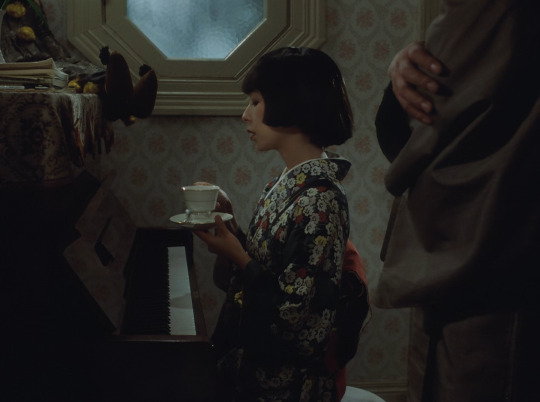
14 notes
·
View notes
Photo
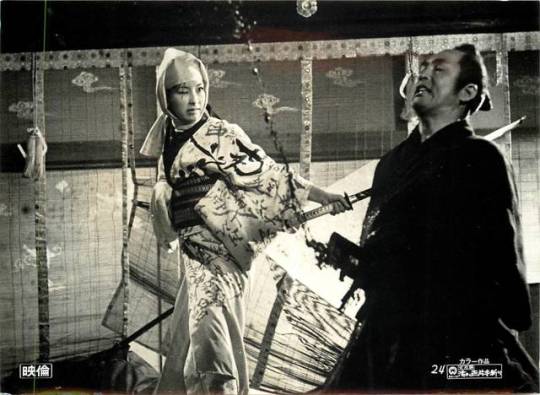
Lobby card for Lady Sazen And The Drenched Swallow Sword (Onna Sazen Nuretsubame Katategiri, 女左膳 濡れ燕片手斬り), 1969, directed by Kimiyoshi Yasuda (安田公義) and starring Michiyo Okusu (大楠道代).
#Michiyo Okusu#Kimiyoshi Yasuda#Lady Sazen And The Drenched Swallow Sword#Onna Sazen Nuretsubame Katategiri#女左膳 濡れ燕片手斬り#安田公義#大楠道代#Daiei#lobby card
48 notes
·
View notes
Photo





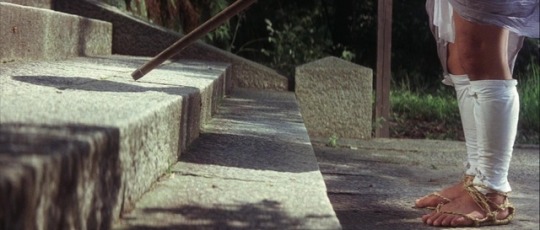
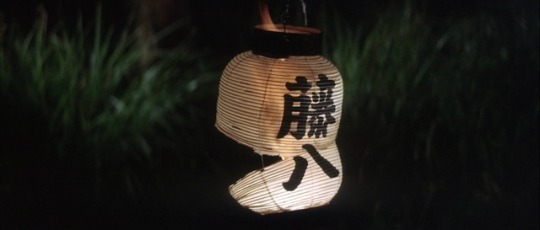

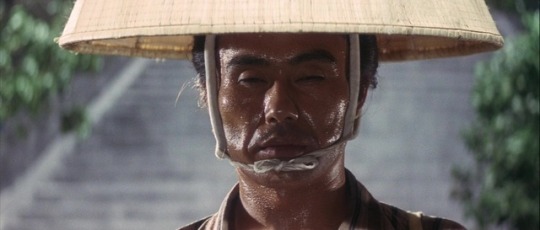

Zatoichi’s Pilgrimage | Kazuo Ikehiro | 1966
27 notes
·
View notes
Text
Women of history who followed their dreams
Some of our favourite women of the past are some of our favourite dreamers too.
In this month’s Women of History, we look at our favourite astronauts, scientists, feminists, poets and artists.
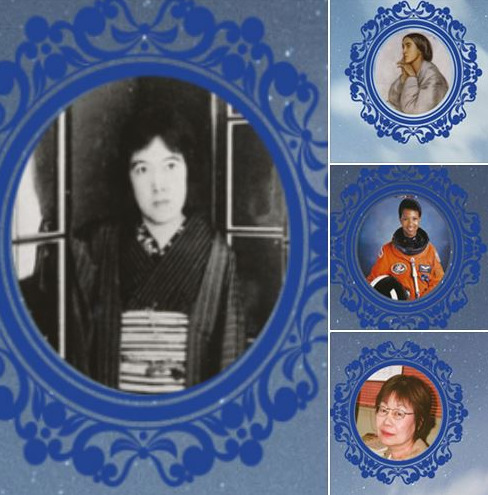
Read it all here in Cinders new issue on pg.40 X
#women of history#dreamers#feminism#dream#women of the past#astronauts#scientists#feminists#artists#akiko yosano#christina rossetti#mae carol jemison#michiyo okusu#jocelyn bell burnell#Cinders Volume Two Issue Three#CVTIT#Cinders
1 note
·
View note
Photo

Michiyo Okusu in: Kagerō-za (Dir. Seijun Suzuki, 1981).
Source
27 notes
·
View notes
Photo


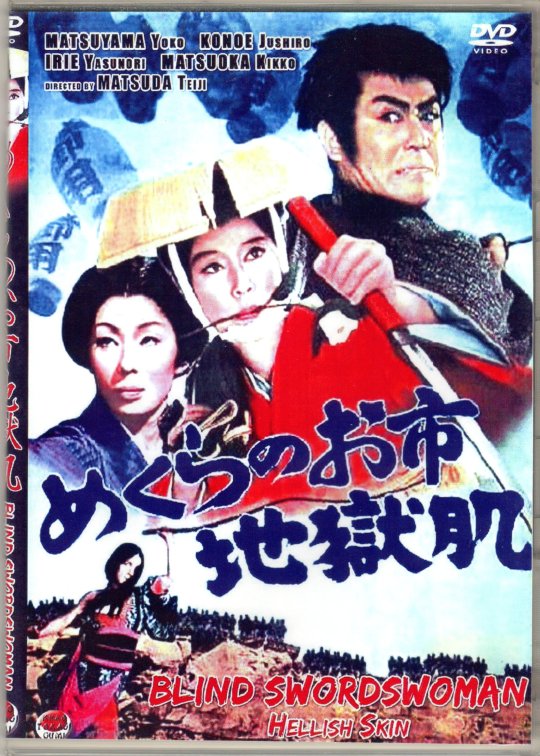
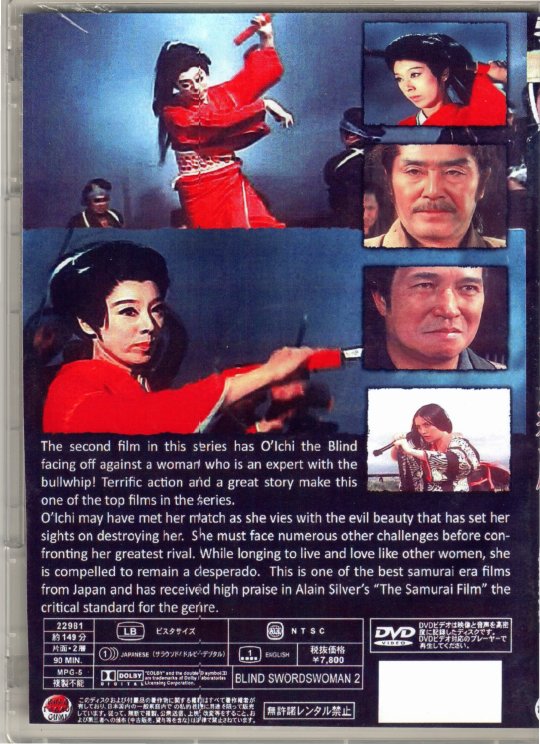
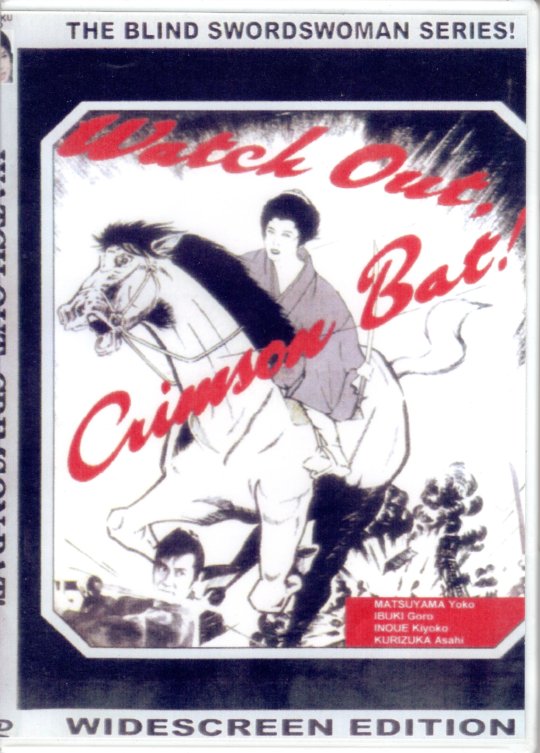

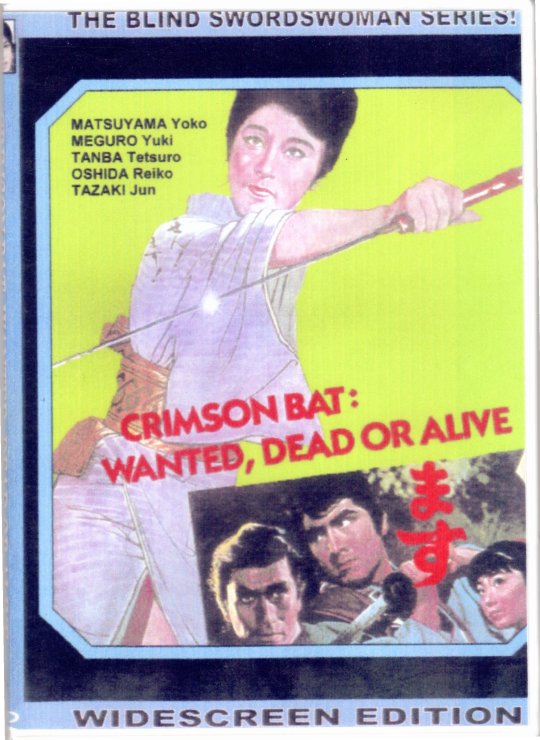
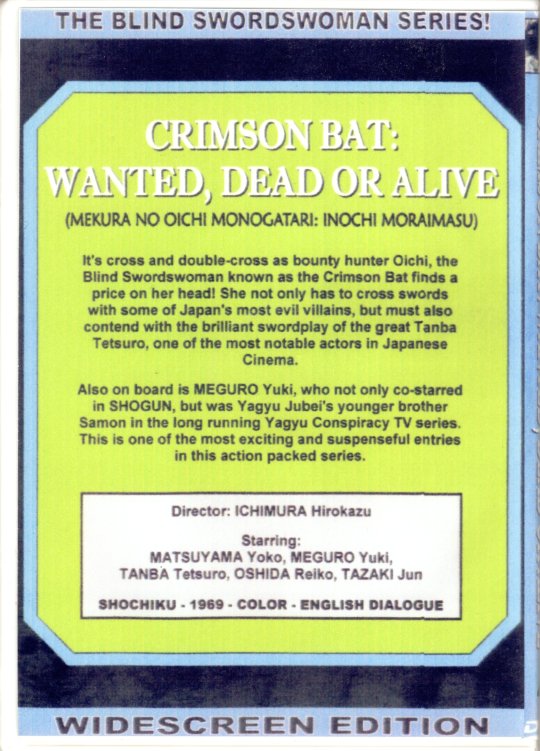
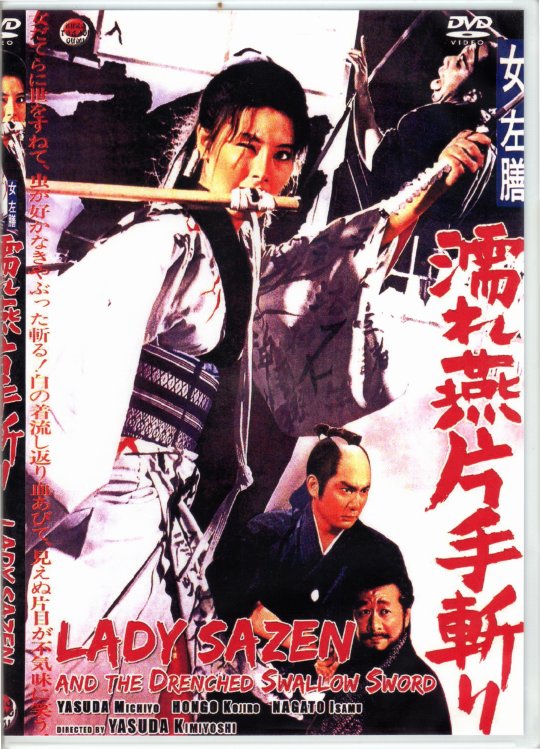
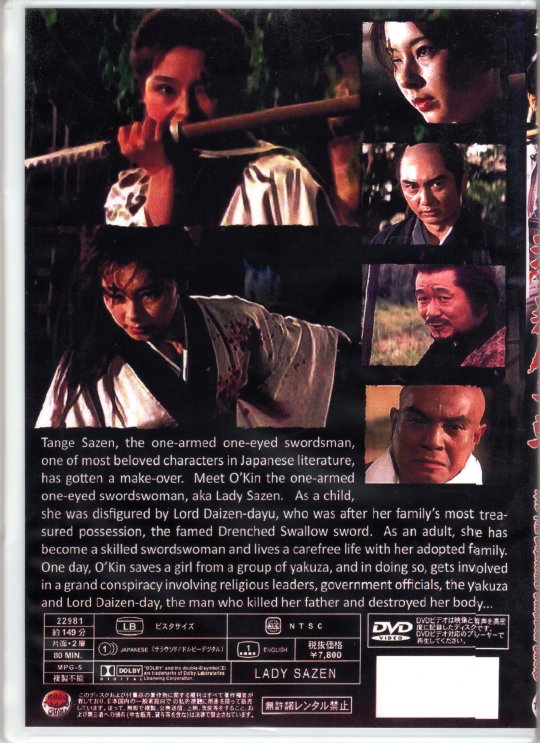
1969 was an interesting year in Japanese cinema, as the public was presented with distaff versions of two extremely popular characters: Zatoichi, the Blind Swordsman, and Tange Sazen.
The first was The Crimson Bat series from Shochiku Studios. The series stars Yoko Matsuyama as Oichi (referered to several times in the series, even by herself, as “blind Oichi” or “Oichi the blind”). Strangely enough, she is never called Crimson Bat in any of the films, and that name only appears on the international versions of the films. There is much speculation as to where the name came from, although Oichi does carry a red sword cane, and her costume through most of the second of the second film is a red kimono.
While based on a manga series, the films are clearly a response to the popularity the Shinato Katsu Zatoichi film series, produced by Daiei and still running strong at the time.
Other than the obvious difference between the characters in that Oichi is female, she is also given the rather sexist weakness for always pining for love, and usually falling for one of her male adversaries. While that might make sense in the first film before she becomes an expert swordswoman and learned to be self-reliant, it makes absolutely no sense in the later films when she’s become a bounty hunter.
Another big difference between the two: Zatoichi is always portrayed as scruffy and looks like he’s spent most of his life living on the road. Shintaro Katsu was also kind of pudgy, and certainly - at this point in his career - could not be accused of having matinee idol looks. Oichi, on the other hand, is just flat out gorgeous. Her make-up and, clothing and hair always look like she’s ready for a modeling gig. And she has the super-power of always keeping her hair perfectly coiffed, either while battling dozens of opponents or falling off cliffs (which she does a couple of times),
There were only 4 films in the series, the first 3 released in 1969 and the last in 1970. The following year Yoko Matsuyama returned to the role in a TV series that ran for 25 episodes. Ms. Matsuyama also went on to marry Teruo Tanashita, the artist who created the original manga introducing Oichi, the lucky guy. In America I guess the equivalent would be William Moulton Marston or Harry G. Peter (the creators of Wonder Woman) marrying Linda Carter.
I enjoyed the movies despite the annoying flaw with Oichi’s character, but I guess the filmmakers thought it was necessary A: because she was a woman (that’s just my assumption; I don’t agree with that as a valid reason); or B) to differentiate her more from Zatoichi.
I haven’t been able to locate the TV series yet, but would love to check it out if I do.
The second distaff character making the scene in 1969 was Lady Sazen, the female version of Tange Sazen.
Tange Sazen is a one-armed, one-eyed ronin who was introduced in 1927 as a minor character in a serial story about Ooka Tadasuke, an actual historical person who was a magistrate in Eo (Tokyo) during the Shogunate. Tange Sazen was so popular with the readers, however, that three films were produced by three different studios featuring Sazen as the hero. These were so successful that a new story, with Sazen as the hero, was serialized in the newspapers.
Tange Sazen went on to have a long career in both print, film, and eventually TV. There were several film series, sometimes from competing studios released in the same years, released in Japan, The character has been portrayed by several notable Japanese actors. The ones most familiar to most Western fans who be Ryutaro Otomo (Orochimaru from The Magic Serpent), Kiinosuke Nakamura (Itoo Ogami in the Lone Wolf and Cub TV series), and Tetsuro Tanba (Tiger Tanaka in You Only Live Twice, and one of Japan’s most prolific actors - the man never turned down a role!).
The character is so popular because, like Zatoichi, he is considered an outsider from society due to his handicap, but is nonetheless a tireless champion of justice and the downtrodden.
Lady Sazen and the Drenched Swallow Sword from Daiei Film stars Michiyo Okusu (billed as Michiyo Yasuda), who - despite the fake scar over her right eye - is almost too pretty to be taken seriously in the role. Her character’s real name is O-kin, but people call her “Lady Sazen” because of her similarity with Tange Sazen (which, to digress, is kind of meta: in the world of this film does Tange Sazen actually exist, or is he a fictional character that O-Kin resembles?).
Like her male counterpart, O-Kin loses her arm and eye due to treachery. She trains herself to become a master swordswoman, and is quick to butt in when she finds injustice. The main plot of the film involves a daimyo (feudal lord) who is a rabid sword collector trying to get O-Kin’s fabled Drenched Swallow sword for himself. It turns out the lord is also the one responsible for O-Kin’s disfigurement and the death of her family when she was younger.
Ms. Okusu/Yasuda does a wonderful job with what is traditionally a male role. Despite her beauty, she does her best to scowl menacingly, talk gruffly, and be prickly in the best Tange Sazen fashion. She did a great job at Sazen’s signature move, which is drawing her sword while holding the scabbard in her teeth. She does well in the sword fighting scenes, especially with the difficulty of having to do so with her right arm tucked behind her back.
This was not the first time a female version of the character had appeared on the silver screen. Thirty years earlier Komoka Hara gave audiences a Lady Sazen in at least one, some sources say maybe two film. The main difference there, at least as far as I can ascertain, is Ms. Hara played Tange Sazen as a female character, instead of Ms. Okusu/Yasuda’s playing a woman who is similar to Sazen, but isn’t actually Tange Sazen.
The film’s co-star is Kojiro Hongo, who was one of Daiei’s matinee idols, and many fans may recognize him from a few of the Showa-era Gamera films. There’s also the usual stable of supporting actors you’ll find in every Daiei film from that period, many who had appeared in all the Zatoichi films.
Sadly, there was no follow-up to this film. I don’t know whether it was because the film did poorly at the box office, or because the audience did not accept a female Sazen.
Or maybe it fell victim to Daei’s impending collapse. The advent and popularity of television was killing off the film industry in Japan at that time. By the early 1970s the studio system as it was known in Japan had disappeared, studio and film budgets were drastically slashed, and Daiei was bankrupt and out of business.
Nevertheless, this was another film I enjoyed. It actually shares a spot on my DVD shelves with my other Tange Sazen films, whereas all others I meticulously store in alphabetical order.
5 notes
·
View notes
Text



chijin no ai (love for an idiot / la gatta giapponese) / 1967 / yasuzo masumura
#yasuzomasumura#japanese film#1967 film#film frames#love for an idiot#michiyo okusu#junichiro tanizaki
6 notes
·
View notes
Photo

📷Lobby card for Girl With Bamboo Leaves - Tokozu Tanaka and starring Michiyo Okusu
8 notes
·
View notes
Photo

Lobby card for Women’s Cell (Zoku Hiroku Onna Ro, 続・秘録おんな牢), 1968, directed by Kimiyoshi Yasuda (安田公義) and starring Michiyo Okusu (安田道代).
#Michiyo Okusu#Kimiyoshi Yasuda#Women's Cell#安田道代#安田公義#Zoku Hiroku Onna Ro#続・秘録おんな牢#Daiei#lobby card
40 notes
·
View notes
